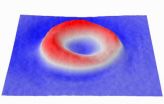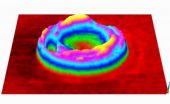(Press-News.org) CHAMPAIGN, Ill. — It may look like fresh blood and flow like fresh blood, but the longer blood is stored, the less it can carry oxygen into the tiny microcapillaries of the body, says a new study from University of Illinois researchers.
Using advanced optical techniques, the researchers measured the stiffness of the membrane surrounding red blood cells over time. They found that, even though the cells retain their shape and hemoglobin content, the membranes get stiffer, which steadily decreases the cells' functionality.
Led by electrical and computer engineering professor Gabriel Popescu, the team published its results in the journal Scientific Reports.
"Our results show some surprising facts: Even though the blood looks good on the surface, its functionality is degrading steadily with time," said Popescu, who is also part of the Beckman Institute for Advanced Science and Technology at the U. of I.
Nearly 14 million units of blood are banked annually in the U.S. The established "shelf life" for blood in blood banks is 42 days. During that time, a lot of changes can happen to the blood cells – they can become damaged or rupture. But much of the blood keeps its shape and, by all appearances, looks like it did the day it was donated.
Popescu and his colleagues wanted to quantitatively measure blood cells over time to see what changed and what stayed the same, to help determine what effect older blood could have on a patient. They used a special optical technique called spatial light interference microscopy (SLIM), a method developed in Popescu's lab at Illinois in 2011. It uses light to noninvasively measure cell mass and topology with nanoscale accuracy. Through software and hardware advances, the SLIM system today acquires images almost 100 times faster than three years ago.
The researchers took time-lapse images of the cells, measuring and charting the cell's properties. In particular, they were able to measure nanometer scale motions of the cell membrane, which are indicative of the cell's stiffness and function. The fainter the membrane motion, the less functional the cell, much like how a fainter pulse indicates problems with a patient.
The measurements revealed that a lot of characteristics stay the same over time: The cells retain their shape, mass and hemoglobin content, for example. However, the membranes become stiffer and less elastic as time goes by. This is important because the blood cells need to be flexible enough to travel through tiny capillaries and permeable enough for oxygen to pass through.
"In microcirculation such as that in the brain, cells need to squeeze though very narrow capillaries to carry oxygen," said postdoctoral researcher Basanta Bhaduri, the lead author of the paper. "If they are not deformable enough, the oxygen transport is impeded to that particular organ and major clinical problems may arise. This is the reason why new red blood cells are produced continuously by the bone marrow, such that no cells older than 100 days or so exist in our circulation. "
The researchers hope that the SLIM imaging method will be used clinically to monitor stored blood before it is given to patients, since conventional white-light microscopes can be easily adapted for SLIM with a few extra components.
"These results can have a wide variety of clinical applications," said co-author Krishna Tangella, U. of I professor of pathology who is also affiliated with the Christie Clinic in Urbana, Illinois. "Functional data from red blood cells would help physicians determine when to give red-cell transfusions for patients with anemia. This study may help better utilization of red-cell transfusions, which will not only decrease healthcare costs but also increase the quality of care."
INFORMATION:
The National Science Foundation and Agilent Laboratories supported this work. Additional co-authors included U. of I. graduate student Mikhail Kandel and Carlo Brugnara, a professor of pathology at Boston Children's Hospital.
END EMBARGO FOR RELEASE UNTIL 8 A.M. CDT SEPT. 5 (FRIDAY)
Editor's notes: To reach Gabriel Popescu, call (217) 333-4840; email: gpopescu@illinois.edu. The paper, "Optical Assay of Erythrocyte Function in Banked Blood," will be freely available online at time of embargo.
CONTACT: Liz Ahlberg, Physical Sciences Editor 217-244-1073; eahlberg@illinois.edu
Banked blood grows stiffer with age, study finds
2014-09-05
ELSE PRESS RELEASES FROM THIS DATE:
Brain mechanism underlying the recognition of hand gestures develops even when blind
2014-09-05
Does a distinctive mechanism work in the brain of congenitally blind individuals when understanding and learning others' gestures? Or does the same mechanism as with sighted individuals work? Japanese researchers figured out that activated brain regions of congenitally blind individuals and activated brain regions of sighted individuals share common regions when recognizing human hand gestures. They indicated that a region of the neural network that recognizes others' hand gestures is formed in the same way even without visual information. The findings are discussed in ...
Synthetic messenger boosts immune system
2014-09-05
This news release is available in German. When a pathogen attacks a healthy cell in the body, T lymphocytes are tasked with identifying and destroying the infected cell. Scientists know that they undergo a "training program" for this task in the lymph nodes or the spleen. "Programming cells" play a key role here, presenting pathogen constituents to the T lymphocytes. This is how the T lymphocytes learn to recognize these components and become specialized "killer" cells. Research teams led by Prof. Percy Knolle from Klinikum rechts der Isar and the University of Bonn ...
Combination microRNA therapy shown to suppress non-small-cell lung cancer
2014-09-05
BOSTON – Micro RNAs (miRNA) have recently emerged as key therapeutic agents against cancers and are actively being evaluated in pre-clinical models of various cancers as well as in human clinical trials.
Now, new findings show that a combination therapy of two miRNAs, let-7 and miR-34, suppressed tumor growth in an animal model of non-small-cell lung cancer, offering a promising therapeutic avenue for this extremely aggressive malignancy.
Currently reported online in the journal Oncogene, the study provides two important examples of basic science discoveries making ...
Stigma as a barrier to mental health care
2014-09-05
Over 60 million Americans are thought to experience mental illness in a given year, and the impacts of mental illness are undoubtedly felt by millions more in the form of family members, friends, and coworkers. Despite the availability of effective evidence-based treatment, about 40% of individuals with serious mental illness do not receive care and many who begin an intervention fail to complete it. A new report, published in Psychological Science in the Public Interest, a journal of the Association for Psychological Science, investigates stigma as a significant barrier ...
An 'anchor' that keeps proteins together
2014-09-05
All organisms react to different external and internal stimuli: if, for example, the hyphae fungus Sordaria macrospora is supplied with food, it produces fruiting bodies as part of its oestrous cycle. To initiate this reaction, signals have to be transmitted within the cell, which are conveyed by proteins. Physical proximity is a fundamental requirement for different proteins to be able to communicate with each other. Generating that proximity is what scaffolding proteins do, by binding like an anchor to several proteins and keeping them together for the duration of signal ...
Use of dengue vaccine may cause short-term spikes in its prevalence
2014-09-05
CORVALLIS, Ore. – As researchers continue to work toward vaccines for serious tropical diseases such as dengue fever, experts caution in a new report that such vaccines will probably cause temporary but significant spikes in the disease in the years after they are first used.
This counter-intuitive and unwanted result could lead to frustrated policy makers, a skeptical public and concerns that the vaccine is making things worse instead of better, researchers say.
In fact, it will just be the natural result of complex interactions between less-than-perfect vaccine protection ...
E-cigarettes: Studies presented at the ERS Congress
2014-09-05
Munich, Germany: The latest evidence on the potential benefits and risks of e-cigarettes has been presented this week at the European Respiratory Society's International Congress in Munich.
Electronic cigarettes have received much attention in recent years as their use has increased across Europe. As the devices are relatively new, there is little long-term evidence detailing the potential harm or benefit that these devices can cause.
During the ERS Congress, a number of abstracts will be presented on the topic. The key outcomes are revealed here:
Research into ...
IBD patients: Consider giving infliximab a second try
2014-09-05
Bethesda, MD (Sept. 5, 2014) — Restarting infliximab therapy after a drug holiday is safe and effective for patients with inflammatory bowel disease (IBD), according to a new study1 in Clinical Gastroenterology and Hepatology, the official clinical practice journal of the American Gastroenterological Association.
"Our findings suggest that starting infliximab after a history of prior therapy can be very beneficial to patients," said lead study author Filip Baert, MD, PhD, from the department of gastroenterology, University Hospitals Leuven in Belgium. "Most striking, ...
New blood test could offer more tailored treatment of ovarian cancer
2014-09-05
A new blood test allowing doctors to predict which ovarian cancer patients will respond to particular types of treatment is a step closer following a new study by Manchester scientists.
Researchers from The University of Manchester and The Christie NHS Foundation Trust - both part of Manchester Cancer Research Centre - say the test could be developed and used in hospitals within the next few years.
It would mean medics could see which patients could benefit from blood vessel-targeting drugs - such as bevacizumab - in addition to conventional therapy. Meanwhilehile others ...
California blue whales rebound from whaling, first of their kin to do so
2014-09-05
The number of California blue whales has rebounded to near historical levels, according to new research by the University of Washington, and while the number of blue whales struck by ships is likely above allowable U.S. limits, such strikes do not immediately threaten that recovery.
This is the only population of blue whales known to have recovered from whaling – blue whales as a species having been hunted nearly to extinction.
Blue whales – nearly 100 feet in length and weighing 190 tons as adults – are the largest animals on earth. And they are the heaviest ever, weighing ...




